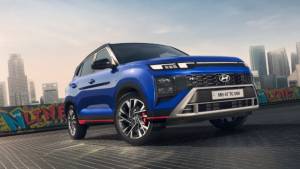Dial 991
Team OD
Published: October 07, 2011, 01:11 PM IST
You could be excused for being confused by Porsche's type numbers. The 911 is the model that made the German marque truly famous but Porsche people never refer to it as such and it has only occasionally appeared as a badge on the car itself. Devotees talk instead about 964, 933, 996 and 997, identifying the evolution points in the 911's 48-year history.
From this month, making its debut at the Frankfurt Motor Show, there will be another number to add to multiplicity of 911 variants: 991. The shape is familiar but this is one of the more significant developments for the 911, with a new body/chassis made largely in aluminium, and subtly different proportions.
August Achleitner, 'Mr 911' at Stuttgart, says that the new model had to be 'better in every way' than the current car. Quite a challenge, given the way the 911 has been fine-honed over the years and particularly since the last version of the 997 has been widely praised as the very best of the breed.
We are happy to join that chorus of approval for the last 997 â" the Porsche Carrera GTS. A spell driving one on the best roads that southern England can provide showed that this is a car that is at once mature and full of youthful vigour. And in its rarefied price class it represents the best value 911, including a suite of desirable options that would previously have added Rs. 11.08 lakh to the UK list price of Rs. 57.92 lakh.
The GTS certainly looks the business. Our car, a coupe in Carrara (not Carrera), white with shiny black centre-lock wheels and red brake calipers showing through, sat low and wide, ready for take-off. The GTS has the wider rear bodywork and bigger, 19-inch wheels of the 911 Turbo and inside, Alcantara faux-suede covering the steering wheel and sports seats gives some of feeling of the GT2 and GT3 track cars.
Actually, the GTS is a tweaked Carrera S. The 3.8-litre naturally-aspirated engine has a 22PS increase in maximum power, to 414PS. A louder sports exhaust system, with four tailpipes, is standard. A package called Porsche Active Suspension Management (PASM) brings variable damping with stiffer springs and a 20mm reduction in ride height and includes an electronic limited-slip differential.
414PS is only 12PS shy of the output of the 996 Turbo â" one of the world's fastest cars a decade ago â" so the GTS has plenty of performance: a maximum speed of 305 kmph and 0-100kmph acceleration in 4.6 seconds. Furthermore, the GTS modifications mean that the 420Nm maximum torque is delivered at 4,200rpm, 200rpm lower than the Carrera 2.
So this is a fast and usable everyday sports car. Porsche 911s have always been like that, except for the GT2, GT3 and RS models of recent years which are really road-legal race cars. You have to make a small compromise with the GTS in town or at low speeds on bumpy country roads as the suspension is too stiff for comfort. Also the clutch is heavy by today's standards and the pedal has an awkwardly high bite point. The optional PDK seven-speed twin-clutch semi-automatic gearbox is preferable.
At speed, out on the open road, you forgive these minor disadvantages because the GTS is so terrific to drive. The steering is perfect - direct and with just the right amout of power assistance â" and the brakes superb. The ride actually improves with speed (though you wouldn't use the Sport damper setting on anything other than a totally smooth road) and, going hard, the snick-snick changes through the six-speed gearbox become very satisfying.
Most of all, though, it is the engine that you love to love. Its ever-eager response and that distinctive flat-six sound are things that make a 911 what it is: a modern-day icon.
Why no mention of the inherent handling and stability problems caused by the 911's engine location at the rear? Because they are no longer problems: electronics, from traction and stability controls to the limited-slip differential, have seen to that.
Today's 911 is truly a triumph of development over design. The original 911, like the Porsche 356 that preceded it, had the same layout as Professor Porsche's pre-war Volkswagen.
I have driven many 911s through the years and experienced the lift-off oversteer and treacherous handling in the wet that caught so many drivers of the earlier models. That was tamed to a great extent by the multi-link rear suspension introduced with the 1995 993 series.
The lightweight 911 RS in 1973 was stripped out like the GT2/3 of today and the first to have a ducktail spoiler, while the 930 Turbo, introduced in 1975, moved Porsche high up the performance league with 264PS from its 3-litre engine. Sounds a bit tame now but it was a formidable car in its day.
The 1987 959 supercar was loosely based on the 911 and pioneered a number of systems that subsequently appeared on the regular models, notably variable four-wheel drive which is standard on today's 997 Turbo and also available as the Carrera 4.
The whirring air-cooled flat-six engine was supplanted by water cooling for the 1998 996. Necessary to cope with ever-increasing power, this also reduced engine noise and made for a more efficient heater. A small but significant point for the 996 was the change from floor-hinged to conventional pendant brake and clutch pedals which allowed a more comfortable driving position.

The performance and durability of 911s had been proved by innumerable successes in racing and rallying, including the Le Mans 24 Hours in 1979 won outright by the 935 racing version.
You used to learn to love the 911 as much for its flaws as its talents but now it seems that Porsche has played every variation, corrected its foibles, and made it the strongest and most civilized premium sports car in the business. How can it hope to improve on that?
Here's what we know about the 991: it retains the current car's dimensions except it is five cm longer and has the wheelbase extended by 10cm and a more even front-to-rear weight balance; it is lighter (about 30kg less than the 1,420kg of the 997 GTS); the engine choice will still be flat-sixes 3.4-litre with direct injection (from the Boxster S) and 3.8-litre, with fuel-saving auto stop-start; seven-speed manual (a first) and PDK twin-clutch will be offered; the steering gets electric power assistance; inside, instruments and the sweeping centre console with two vertical rows of switches are similar to the Panamera.
The effect should be a car with 15 per cent better fuel consumption (and therefore CO2 emissions) with similar performance to today's models. The revised layout is designed to accommodate a hybrid system (of unspecified type) to be introduced in 2015.
What hasn't changed are the fundamentals: the unmistakable look, the compact size, the rear-mounted engine, the sound and fury of a high-revving flat-six. In the 1970s Porsche reckoned that the 911 had had its day and that it should be replaced by the 928. Customers thought otherwise and while the 928 and other front-engined models came and went, the 911 carried on regardless. Now, surrounded by Boxsters, Caymans, Cayennes and Panameras, the 911 stands alone, unassailable, as the car that defines Porsche. The new generation ensures that the 911 will be around for its 50th birthday â" and probably its 60th.
Price (Ex-Delhi)
Starts Rs 1.38 Crore
Starts Rs 1.38 Crore
Displacement
3800cc
3800cc
Transmission
Automatic
Automatic
Max Power(ps)
350
350
Max Torque(Nm)
708
708
Mileage
10.3 Kmpl
10.3 Kmpl
Price (Ex-Delhi)
Starts Rs 1.02 Crore
Starts Rs 1.02 Crore
Displacement
3436cc
3436cc
Transmission
Automatic
Automatic
Max Power(ps)
315
315
Max Torque(Nm)
360
360
Mileage
12.1 Kmpl
12.1 Kmpl
Related Stories
Top Stories
Latest Videos
Most Popular
Network18 Updates
Compare














